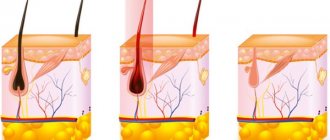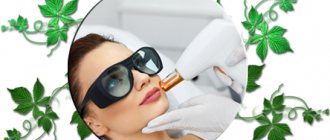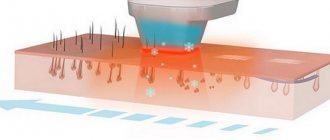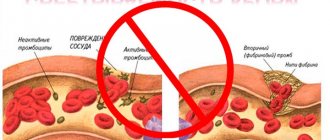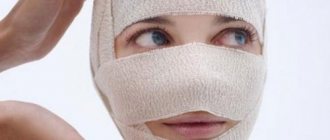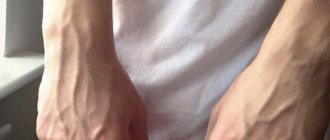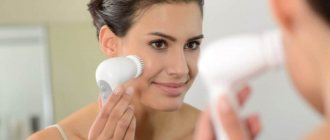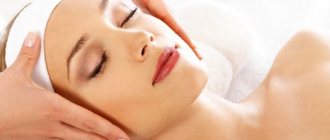To protect beauty, all means are good, and modern technologies will help preserve youth for a long time. To rejuvenate the face, many techniques have been invented to get rid of numerous defects in the form of post-acne, scars and wrinkles in cosmetology using an erbium laser, which, while eliminating them, also rejuvenates the skin.
What is an erbium laser
It heats the skin with its beam, under the influence of high temperatures, its upper layer seems to evaporate, and dead cells are removed along with it. This process triggers the regeneration of new cells and their intensive renewal. The skin renews itself faster and collagen is produced in its layers.
The video below will tell you what an erbium laser is:
Concept and essence
The effect of an erbium laser is equivalent to a thermomechanical effect on the skin. This laser has a wavelength of 2940 nanometers, which corresponds to the absorption spectrum of water.
The laser exposure time on the skin is short and therefore has a mild effect on the skin. In this case, under the influence of laser energy, the water contained in the skin passes into a vapor or liquid state. The liquid in the epidermis expands very quickly and creates high pressure, under the influence of which excess tissue is expelled from the depths of the skin; this principle applies to both hard and soft tissues. In those places where laser treatment occurred, the cellular fluid evaporates and the production of new cells and collagen is stimulated.
The high speed of laser action makes it possible for it to penetrate only into the upper layers of the epidermis, without affecting the deeper ones, which is why the laser is called “cold”. This makes it possible to carry out laser resurfacing not only of the face and neck, but also the area around the eyes and mouth, and the back of the hands. The procedure has a tightening effect and its results last for six months.
Erbium laser (before and after photos)
Types of procedure
Erbium laser is not only used for resurfacing, but also used for fractional photothermolysis. The principle of this technique is based on the impact of the laser on small areas of the skin, they are microscopic, their size is no more than the diameter of a hair. There are many such zones on every square centimeter of skin; there can be either 100 or 11 thousand of them.
The beam penetration is about 1.5 microns, it is at this level that wrinkles form; after the destruction of damaged fibers, new collagen and elastin tissues quickly form in their places.
This fractional impact is much better than conventional grinding; after it, more effective results are achieved and all signs of aging are removed.
Comparison with similar techniques
The erbium laser gives a facelift that is comparable to the use of a CO2 laser. Unlike similar techniques, this laser removes only a thin layer of skin, which allows you to control the procedure at all stages. A low-energy laser destroys only the upper layers of the skin, while healthy tissue located deeper is not affected. With this technique there are no complications in the form of scars and hyperpigmentation.
Previously, chemical peeling was used to stimulate new cells and remove their dead counterparts, which sometimes resulted in unpleasant consequences. The erbium laser has now become an excellent analogue of this technique.
Performing a 4D laser rejuvenation procedure
Let's consider the technology from the point of view of step-by-step impact (Fig. 2).
Rice. 2. Four steps in the 4D rejuvenation procedure.
1st step – SmoothLifting
We begin the procedure by exposing the skin to Er:YAG laser radiation (in non-ablative thermal mode using fractional technology) from the oral cavity - on the mucous membrane of the buccal and perioral areas.
This technology, called SmoothLifting, is a new and, in our opinion, promising approach to skin rejuvenation. Let's look at it in more detail.
In 2011, reports appeared in the literature on the use of Er:YAG laser energy (2940 nm) in non-ablative thermal mode for the treatment of stress urinary incontinence (SUI) in women. The effectiveness of this treatment method is due to the immediate contraction of collagen fibers in response to heat and the stimulation of neocollagenogenesis and neoangiogenesis. As a result, the tissue in the treatment area gradually contracts, improving support for the bladder neck and urethra.
The results of treatment of NMPN have prompted companies to develop a technique for facial skin rejuvenation based on the impact of such laser radiation on the oral mucosa. The use of ultra-long packet pulses of an Er:YAG laser (0.25 s) at a fluence of 0.8–2.5 J/cm2 made it possible to obtain a coagulation mode that provides a quick and effective reduction in the area of the treated tissue (up to 15%) without compromising the integrity of the epidermis .
Rice. 3. Directions of laser passes when performing SmoothLifting.
The long-pulse laser beam penetrates to a depth of up to 400 μm (0.4 mm), and uniformly controlled heating of tissue occurs to a temperature of 60–63 ° C, optimal for immediate collagen contraction: the intermolecular cross-links of the collagen triple helix are shortened, the fibers are reduced by two-thirds their lengths before the procedure. Preservation of tissue integrity is guaranteed by special selection of pulse duration and intervals between them. The skin lifting effect becomes noticeable almost immediately. (This is why the SmoothLifting procedure is often called express rejuvenation.)
In addition to the instantaneous reaction of collagen contraction in the tissue, the processes of neocollagenogenesis are launched. As a result, the collagen framework of the skin is strengthened by new, young collagen, the skin becomes firm and elastic.
Starting the 4D rejuvenation procedure with the SmoothLifting technique, we additionally get the opportunity to diagnose how effective thermal loads are for the skin of a particular patient, what the skin’s own ability to contract is. That is, it gives us valuable information that will allow us to further adapt the procedure to the characteristics of the skin and more accurately predict the result.
The effect of smoothing wrinkles when using SmoothLifting technology is comparable to the effect of introducing dermal fillers: wrinkles are pushed out from the inside, filling the skin folds of the middle and lower thirds of the face.
The Smooth mode (from the English smooth - soft, smooth) does not allow the tissue to overheat, since a packaged impulse with controlled energy is applied, which allows you to control the temperature increase without values critical for the skin. Therefore, it can be used on all areas of the face and body, including the skin over the mammary glands and thyroid gland (décolleté and neck areas), which cannot be affected, for example, by a neodymium laser, since its energy penetrates much deeper (up to 4 mm).
2nd step – Frac 3
The second step is designed to use Frac 3 - a non-ablative rejuvenation technique through exposure to a short-pulse Nd:YAG laser at a depth of 2-3 mm of the skin. The short name “Frac 3” refers to the use of fractional non-ablative 3D skin treatment technology. The laser emits short pulses of high peak power to create foci of fine-point coagulation.
Among all non-ablative sources of laser radiation, the Nd:YAG laser probably occupies a leading position. This is due to the long wavelength - 1064 nm, which lies in the optical window, allowing the radiation to penetrate deep into the skin. The action of this wavelength is based on homogeneous photothermolysis.
When using Frac 3, a three-dimensional fractional structure is created inside the dermis with islands of damaged tissue located mainly in places where the optical density changes (Fig. 4). Measurements show the appearance of isolated "fractional" hot islands within the skin.
Rice. 4. Laser-induced islands of damaged tissue: a) standard uniform laser exposure; b) standard two-dimensional fractional impact; c) new three-dimensional laser effect Frac 3.
When using traditional non-ablative fractional laser irradiation, for which water is the chromophore, numerous microthermal zones are surrounded by intact healthy tissue, therefore, there are sufficient resources for rapid and effective skin repair. However, this irradiation creates the shape of only a two-dimensional matrix, and the resulting “columns” under the irradiation areas are damaged unevenly. In addition, there is no selectivity in relation to local skin defects, since the laser beam removes all tissue falling within the area of its influence. Finally, this method requires a special fractional beam delivery device.
When using Frac 3, only defects and irregularities of the skin are exposed to thermal damage (“twists” of collagen and modified vessels, since the chromophores for this radiation are collagen and the hemoglobin family), while healthy normal skin is not affected.
Let us clarify this important point.
If we need to selectively influence specific tissue structures or chromophores (collagen fibers, hair follicle, skin vessels), then the laser wavelength must penetrate deep into the tissue and reach the target structure containing these chromophores.
The duration of the laser pulse must be selected depending on the thermal relaxation time of the target. During prolonged laser irradiation, much of the deposited heat may diffuse out of the target structure, resulting in uncharacteristic thermal damage to adjacent structures. On the contrary, a sufficiently short laser pulse, limiting the thermal effect to the target, creates a maximum temperature difference between it and neighboring structures. The use of a Nd:YAG laser wavelength (λ=1064 nm) to irradiate skin defects with adjustable laser pulse duration depending on the cooling time of these defects became the basis of a new minimally invasive skin rejuvenation method, Frac 3.
The fractional islands of damage formed as a result of exposure to Frac 3 are not limited to a two-dimensional matrix of columns, but are distributed in three-dimensional space throughout the entire volume of the skin, which makes it possible to contract the skin due to the effect along the entire depth of the chromophore. In addition, no additional special optical device is required, which increases the cost-effectiveness of the skin rejuvenation procedure (Fig. 4).
3rd step – Piano
The third step is “gentle”, calm (piano) heating of the skin with radiation from a 1064 nm Nd:YAG laser at all levels: from the stratum corneum of the epidermis to the reticular layer of the dermis and hypodermis. Ultra-long Nd:YAG pulses are used in the second range (0.3–60 s), while at the same time the pulse power parameters are reduced to less invasive values - 80 W. The tissues are heated to a temperature of 40–42 °C, and no damage to the epidermis occurs. The same mechanism of moderate homogeneous photothermolysis is involved, provoking the synthesis of new collagen.
The duration of pulses in Piano mode is significantly longer than the thermal relaxation time of the epidermis; heat is transferred from the chromophore to the surrounding tissues (battery effect). Therefore, radiation in this mode is safe for tissues that are located deeper; the thermal effect on the epidermis is minimal.
So, the action of the Nd:YAG laser in Piano mode is aimed at general, uniform heating of a large mass of skin, due to which the connective tissue is restored with the effect of skin tightening.
Step 4 – light cold laser peeling
And finally, the last step is the use of an Er:YAG laser in cold peeling mode. Cold ablation is a physical phenomenon of evaporation of soft tissue to the depth of penetration of a laser beam with a minimal (5 μm) coagulation zone. The implementation of this phenomenon is possible only when using an Er:YAG laser with a pulse duration shorter than the thermal relaxation time of the surface layers of the epidermis (for example, pulse duration 100 μs, thermal relaxation time of the stratum corneum of the epidermis 250 μs) and an energy density greater than the ablation threshold of 2.5 J/ cm2).
Light surface polishing of the skin eliminates imperfections, resulting in a healthy glow to the skin, creating the effect of velvet skin. The procedure allows you to keep the epidermis intact; the laser action is aimed at heating the papillary layer of the dermis for the purpose of sebum regulation and narrowing pores (superficial peeling effect).
Laser rejuvenation Fotona 4D can only be performed on Fotona systems (Slovenia).
Indications
When performing laser resurfacing, everything happens in comfortable conditions and is absolutely safe, there is no pain, but a slight burning sensation may be felt.
This procedure is used by those who have the following problems:
- sagging skin is clearly visible;
- there are small wrinkles around the mouth, eyes and forehead;
- there are depressions that remain from old acne;
- there are stretch marks on the body;
- small tattoos, age spots and birthmarks;
- cholesterol plaques, scars or papillomas;
- small shallow scars;
- wrinkles above the lip;
- moderately expressed keratosis;
- decreased skin elasticity;
- clogged greasy blinds;
- low skin blood circulation.
After exposure to an erbium laser, the activity of the sebaceous glands is normalized, rapid cell renewal occurs, and the skin type changes from dry to normal.
Erbium laser (scar removal)
The effectiveness of using erbium laser in cosmetology for scars and other skin problems
The first results from laser exposure are visible immediately after the first session. After laser exposure to large areas of the skin, as well as deep exposure, the bandages are removed after a week. Then the patient can already evaluate the result of the procedure: the skin is significantly tightened and wrinkles are smoothed out. Sometimes patients need to undergo several sessions with an erbium laser in order to completely get rid of the problem. The safety of using a laser beam is confirmed by numerous studies, as well as patient reviews.
Contraindications
Among the reasons why an erbium laser cannot be used are:
- pregnancy period;
- autoimmune diseases;
- period of exacerbation of chronic diseases;
- unstable mental state, epilepsy;
- the presence of neoplasms and inflammation in the treated areas;
- problems with blood clotting;
- diabetes type 1 or 2;
- predisposition to scars;
- poor healing of wounds;
- thyroid problems;
- varicose veins in the treated areas.
There are other individual contraindications that can only be determined by a doctor. The technique helps eliminate various skin problems in both middle-aged people and young people.
Application of laser in dentistry
Many patients associate the sound of a drill with pain, so silent dental equipment is constantly being developed. Erbium laser is an excellent alternative and meets all modern requirements.
A light beam of a certain wavelength is capable of silently and painlessly removing microparticles of dental tissue so that the patient does not experience any discomfort.
The laser successfully removes bacteria from tooth tissue and prevents secondary caries from developing under the filling. It provides the formation of a surface that promotes maximum adhesion of tooth tissues to modern filling materials. Local anesthesia may be required if your teeth are sensitive.
Carrying out
The procedure can only be performed by an experienced cosmetologist or dermatologist who has the appropriate certificates for completing courses in the use of erbium lasers.
The video below will tell you how the procedure is carried out:
Preparation
It is not particularly required, in some cases it is necessary to moisturize the skin, it is advisable to carry out peeling, it is better to give preference to the ultrasonic type. If a girl is taking contraceptives, then their course should be interrupted, and if a person is infected with herpes, then she should first take antiviral drugs.
Algorithm
- The duration of the procedure can last from half an hour to 1.5 hours, this is influenced by the number of defects in the treated areas and the skin’s ability to regenerate. Up to 5 procedures may be needed to achieve the desired effect.
- To carry out the procedure, a fractional laser is used, which has a gentle effect on the skin, while coagulation of blood vessels is eliminated.
- After exposure to the laser, which emerges from the nozzle of a special device, the upper layer of the skin is instantly vaporized, but does not affect the deeper layers.
- Immediately after laser resurfacing, a fabric mask is applied to the face, and if small drops of blood appear during the procedure, then these areas are treated with a 0.1% percent solution of diet or adrenaline. If small defects are found on the face, then a collagen gauze mask soaked in erythromycin or methyluracil ointment is applied to it.
Laser resurfacing with erbium laser
Stages of the laser method
No additional preparation or restrictions are required before the procedure. After consultation with a clinic specialist, a convenient time is set for the first session. The skin is pre-treated with an antiseptic in order to prevent the entry of specks or dirt and the appearance of inflammatory processes at the site of exposure.
The specialist then numbs the required area using local anesthesia. When treating large areas of the body, the client may be offered general anesthesia.
Before starting laser exposure, the specialist once again checks the settings of the laser device and sets the necessary parameters in accordance with the client’s needs. After this, the laser beam is directed to the desired areas and acts on them for a certain time.
After the session, swelling, redness and mild itching may occur. All unpleasant symptoms disappear after a couple of days. If adverse reactions do not go away within the first two days, and light bleeding occurs, you should contact a clinic specialist who will prescribe a healing ointment or cream. Adverse reactions usually occur due to individual increased susceptibility to the procedure and thermal effects.
As a rule, all procedures are painless and do not cause any discomfort in the patient, and the patient requires a minimum amount of time to recover. In order for the rehabilitation process to go faster, it is necessary to strictly follow all instructions and the recommendation of a specialist.
Types of lasers:
SYNCHRO FT
More details
- Laser and photoepilation
- Elimination of vascular pathologies
- Elimination of hyperpigmentation
- Non-ablative skin rejuvenation
- Pseudofolliculitis
- Acne therapy
Candela Gentle Lace
More details
- skin rejuvenation
- Laser hair removal
- Vascular lesions
- Elimination of pigmentation
SmartXide DOT
More details
- Fractional laser skin rejuvenation
- Elimination of wrinkles, stretch marks, stretch marks
- Removal of tumors
- Correction of scars and scars
- Elimination of pigmentation
- Acne Therapy
BTL
More details
- Myostimulation
- No-injection mesotherapy
- Injection-free biorevitalization
Rehabilitation
If large areas are treated with laser, then an hour after the procedure they are treated with Panthenol. The collagen mask that was applied immediately after the procedure must be replaced. If there is a threat of infection, you will need to take antibiotics; Bactroban is suitable for topical use, and Macropen for internal use.
The recovery period can last for three days, but in some cases it lasts up to 2 weeks.
Effect
Laser facial resurfacing improves not only its appearance, but also its health:
- Exfoliates the top layer of ectoderm, making it smooth, fresh, radiant, and elastic.
- Makes skin look younger and healthier by stimulating collagen production.
- Polishes the top layer of the epidermis, making it smooth and removing various scars, post-acne marks and other small defects.
- Eliminates facial wrinkles, lifts the face and neck.
- Improves complexion, fights pigmentation, moles, activates blood circulation.
- Tightens pores.
After the first time, it may seem that the laser only worsened the condition of the face, as it may swell, become very red, and small droplets of blood may appear. Don't be afraid of this, this is a normal effect after the procedure. After 3–4 days, the tissue will return to its previous appearance, and after a week, the surface layers of the skin will regenerate and the first small results will be visible. A thin crust forms on the face that cannot be peeled off. To remove it, you need to use a cream, then the crust will easily come off, and underneath there will be healthy, smooth, glowing skin. The laser triggers restoration processes in it, which last for another month, so after 3-4 weeks you can see the final result. The recommended time of year for laser correction is winter or late autumn, since you cannot be in the sun after surgery.
Reviews
The laser resurfacing procedure is painless, so painkillers are used extremely rarely. After it, only a slight burning sensation is felt and swelling may be present. All this goes away after 3 days. In some cases, patients noted severe skin tightness. As a result, the skin is renewed and the person looks younger.
The results of EL are shown in this video:
How it works
The mechanism of action during laser skin resurfacing is based on two main effects (see diagram):
- ablation effect - elimination of cells of the entire stratum corneum of the epidermis;
- the coagulation effect - dosed heating of the upper layers of the dermis (where the main framework proteins collagen and elastin are located) and its thermal damage, which triggers the process of collagen synthesis and accumulation of new elastic fibers.
IMPORTANT! The laser skin resurfacing procedure differs from laser peeling in terms of intensity and depth of effect on the skin:
In our clinic in Moscow, laser skin resurfacing procedures are performed using professional equipment - erbium lasers with guaranteed safety of the procedures. Each of them has its own technology for influencing the skin:
- Fotona SP Dynamis – full-beam dual-mode FT grinding technology (Fotona Technology Inc., Slovenia).
- Palomar 2940 (Palomar Medical Technologies, Inc.USA) – fractional (island) dual-mode resurfacing technology.
Modern design capabilities and patented innovative technologies of these laser machines make it possible to perform laser skin resurfacing procedures, both full-beam and fractional, using various protocols. At the same time, fully controlling and managing the depth and energy of the laser beam.
In addition, the unique capabilities of the Fotona SP Dynamis when performing laser resurfacing procedures allow you to simultaneously combine ablative and coagulation pulses in a wide variety of ratios depending on the tasks at hand. This allows you to fully control the severity of ablation (evaporation of tissue) and coagulation (heating the dermis to renew collagen) to obtain the most effective result:
- If the purpose of laser resurfacing is to remove a large volume of scar tissue, correct relief and various skin defects, eliminate ptosis, etc., then the ablation effect (the process of tissue evaporation) is more pronounced in the parameters used.
- If the laser resurfacing procedure is performed for the purpose of pronounced skin rejuvenation, correction of deep wrinkles, and obtaining a tightening effect, then the effect of coagulation (collagen heating) with minor tissue evaporation will prevail.
Contraindications for use
Like any procedure, the use of an erbium laser has its contraindications:
- skin diseases, acute and chronic;
- malignant skin lesions;
- thrombophlebitis and varicose veins in the affected area;
- pregnancy;
- individual characteristics that the doctor can determine during the consultation.
Modern laser therapy is in a state of constant development and improvement.
Its use is finding ever wider areas of application. Developments have appeared in the field of acupuncture techniques. This is explained by the fact that targeted laser treatment of individual areas had a beneficial effect on other parts of the body and caused positive changes in them. Scientists continue to develop in this area and try to find answers to many questions that will open up new prospects in the use of laser radiation.

